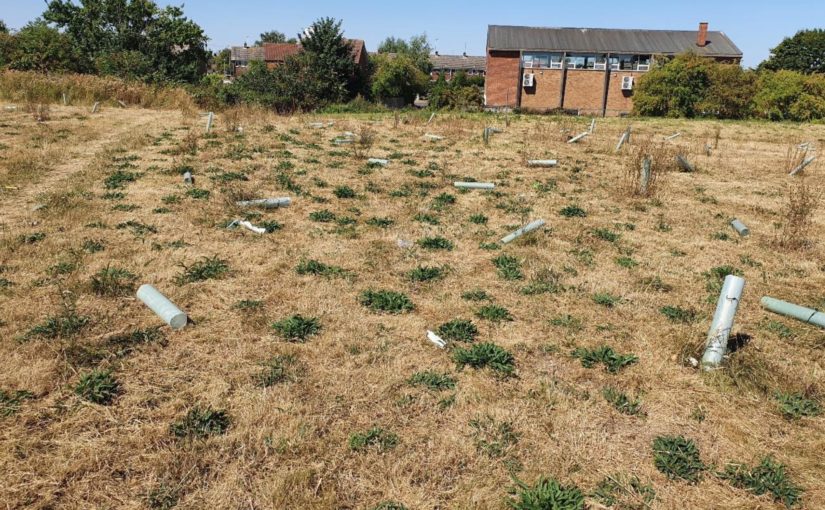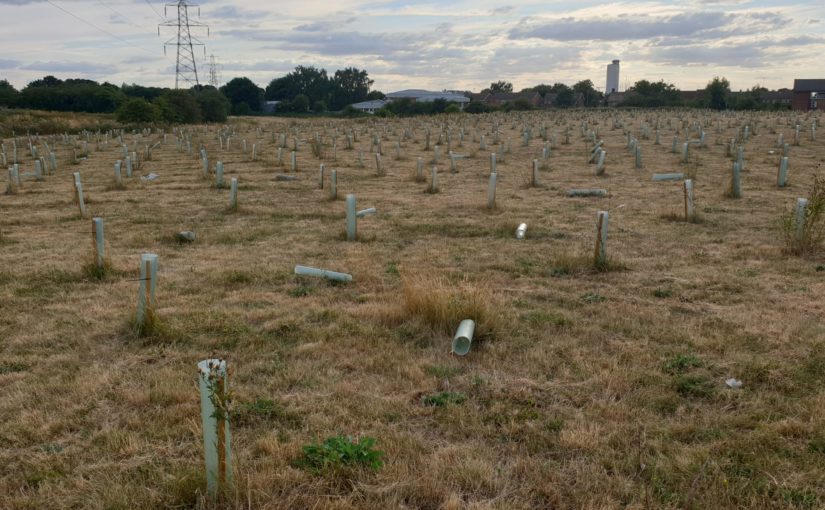For the past 8 months I have been battling with the Borough Council of King’s Lynn and West Norfolk to try to get access to information which is, or should be, any citizen’s right to access.
After the report last year which suggested that some 90% of the trees the West Norfolk council planted at LynnSport have died due to bad planting and management practices, I tried to dig a little further into one element of the council’s position on this. The Environment portfolio holder, Cllr Paul Kunes, quoted the authority’s arboriculture officer during full council saying that the “the majority of the trees are still alive” and that it’s normal to expect some level of ‘shock’ from the whips.
I submitted a request to the council under the Freedom of Information Act to ask for the tree officer’s full written report and his emails about this specific project. I put in the request on 17th August 2022. Under the law the council has 20 working days to respond. It ultimately took 8 months, dozens of emails, and a formal intervention from the government’s information regulator (ICO) for me to get a resolution on the request.
The emails I eventually managed to get hold of date from January to December 2022, so I’m able to get a fairly good picture of what went on internally. From the outset the project has been riddled with issues. I’ve tried to summarise here the sequence of events that I’ve reconstructed from the near-100 pages of emails and documents. I think it highlights a succession of failings and ultimately vindicates the local people who were raising concerns about the efficacy of the scheme.
Funding
The council contracted a local landscaping company to plant and care for the trees on the Lynnsport site, this we knew. What is new information is that the council tried to access grant funding from the Forestry Commission to pay for the scheme.
The grant application seems to have failed because the council rushed in and started planting without doing proper due diligence. In February, before planting started, the Forestry Commission had outstanding questions about suitability for planting due to the site’s landfill history, council’s claims that “previous wildflower planting had failed” (note: Dr Gardner’s report suggested the wildflower planting had been successful), lack of local stakeholder engagement, lack of investigation into current habitats on the site and related ‘mitigations’ if tree planting went ahead, and more. Despite multiple attempts from the Forestry Commission to get a response, the council never answered these questions.
What happened instead was the council went straight ahead with planting the 6300 whips on the Lynnsport site. The Forestry Commission visited the Lynnsport site on 7th March, seemingly to try to answer some of their questions themselves, and found tree planting had already begun. They wrote to the council to remind them that terms and conditions for their grant application mean funding can’t be allocated to planting which has already taken place. The Commission suggest to the council to pause the works to allow partial funding for the rest of the works.
The council asked the contractor to pause the tree planting works on 23rd March. Staff at the landscaping firm claim they advised against this at the time, writing that they “did express concern that this would lead to a higher failure rate as the whips needed to be planted straight away.” The pause happened nonetheless. Eight days later, the council told the contractor to “restart the Lynnsport planting as soon as you are finished on Fairstead.” As late as July 2022, long after the site had been fully planted, the Forestry Commission were still chasing up their original concerns, which suggests the council had abandoned the grant funding route but hadn’t bothered to tell the Commission that fact.
Planting and Watering
The investigation conducted by Dr Gardner last year found 15% of trees were not planted properly, describing them as “placed in slit trenches and not subsequently tamped down”.
The emails reveal that in August the council commissioned King’s Lynn company Golden Tree Surgeons to prepare a report on the state of the LynnSport tree planting scheme. On planting technique, this report asserts “the young trees appear to have been planted correctly” but goes on to say “however the soil around the notches may not have been adequately heeled down” which corroborates Dr Gardner’s findings. (Notches being the hole in the ground whips are planted into.)
The summer of 2022 was the hottest on record for the UK, no one doubts this would have put a lot of pressure on the thousands of small whips we’re talking about. However, the Golden Tree report also finds that “notch holes in several instances were found to have opened in the dry weather releasing the young tree and exposing the roots to the air” meaning these whips stood no chance of taking root. It says saplings were “unlikely to have received sufficient water to sustain the plants in good health.” Clearly, a mixture of insufficient planting technique and lack of watering in the hot weather are responsible for this.
A chain of emails between the landscape contractors and council staff between 27th May and 9th August discuss watering the whips but council staff give no clear direction to actually water the site. There is mention of a separate quote for this work, indicating that some council staff were unaware that the landscapers were already contracted to water the site as necessary during the summer months. Finally on the 10th August, Stuart Ashworth Assistant Director of Environment, steps in to clarify the contractual obligations and reminds the landscape company of this. By October, council staff were only aware of the site being watered once since planting, in August.
Failure rate
After receiving the Golden Tree report on August 16th, the council faced up to the reality of the high failure rate, despite locals raising concerns for months already. Council executives then met “to ascertain if the lack of watering (and associated high failure rate) was a result of us failing to instruct, or [contractors] not carrying out the works they were supposed to”. None of these events and findings made it into the regular reports produced by Cllr Paul Kunes, Environment portfolio holder.
Before releasing these emails, the council had not admitted that any amount of trees died, though have consistently said it would be normal to expect up to 20% failure rate. Conservative councillors dismissed local people’s concerns about the trees. The Golden Tree report found that a whopping 50% of trees had died by their site visit on 11th August.
The contractors are responsible for replacing trees which die within the first two years of planting. In October the council asks them to plan for replanting in November 2022, and by 8th December they had replanted 1000 trees, less than a third of the trees we now know have died.
There are so many more threads that could be pulled on this. Why was the LynnSport site chosen when it was already established as a wildflower meadow as mitigation for previous development, what effect on biodiversity has this had? Why did the council rush into planting, preventing themselves from accessing grant funding for the scheme? How is it that the council allowed the contractor to water the site only once during a record breaking summer? How was Cllr Kunes not held accountable for these staggering death rates? Why have only a third of the dead trees since been replaced, and are there plans to replace the rest? I encourage others to keep pulling on these threads. The LynnSport tree planting scheme, following the failings at King’s Reach previously, is clearly yet another failing of the Conservative administration at this council when it comes to nature and climate change.
If you’re able to, please support my reporting by ‘buying me a coffee’ on Ko-fi. Thank you.

